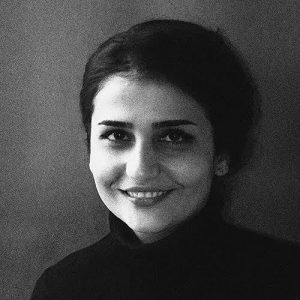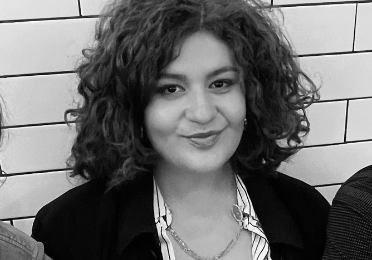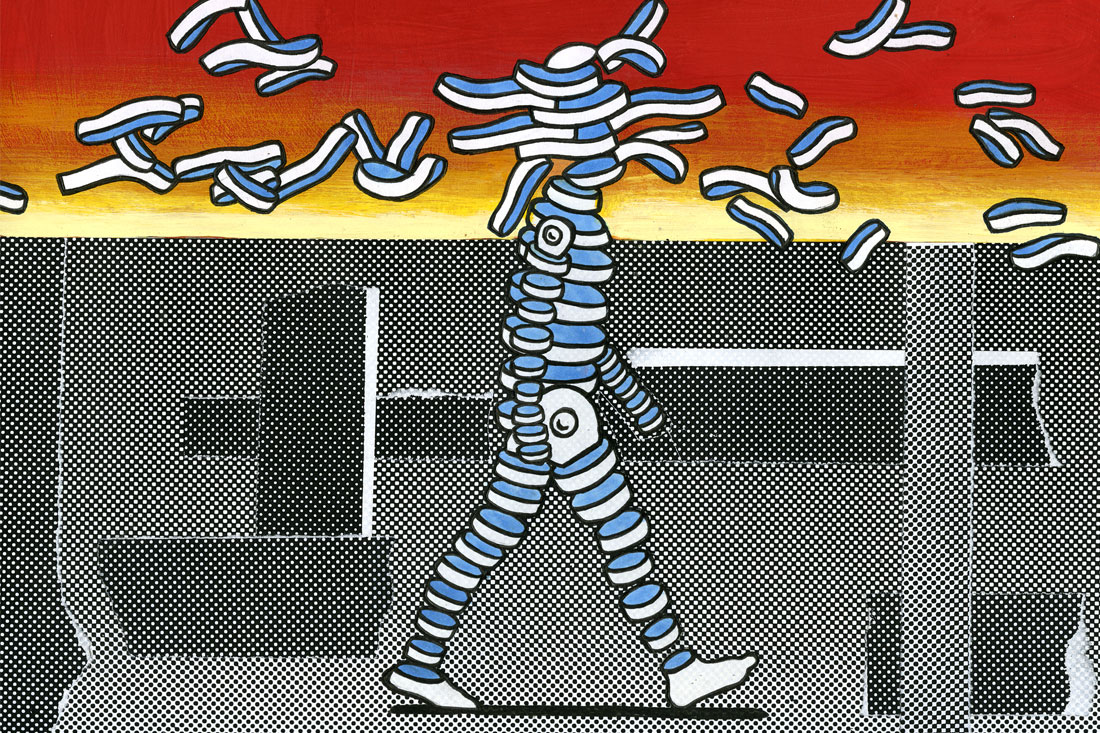Maryam Khaleghi Yazdi is an Iranian Graphic Designer who creates new experiences with each new work. Currently, Maryam is exploring her identity as a person who has migrated from Iran to the United States. In her piece Living in Between (2019) Maryam expresses herself as a migrant through the past, present, and future. Maryam’s work humanizes such a topical issue in our society.
:::
DigA: Your portfolio consists of a lot of color blocking and play on shapes, what does this patterning communicate to or for you?
Maryam Khaleghi Yazdi: Using diverse colors, shapes and techniques in my artworks is a personal choice. In every piece of work, I like to experience something new. I have a pictorial collection of different techniques and color palettes on my phone and computer. I add something new to this collection frequently. Whenever I start a new project, I refer to this collection as a visual reference. Indeed, I get bored if I use the same technique or color pallet all the time.
DigA: Your bio states that you experiment with all roads of graphic design and media from illustration to type design, from poster to packaging design, and at last from logo design to painting. Throughout these experimentations there’s a humanization element. How does humanization add a new dimension to your pieces, whether it is drawings of humans themselves or objects that exist in everyday life?
MKY: Humanization in graphic design lets me challenge people by my thoughts and beliefs, and lets people challenge or even judge me by their own thoughts and beliefs. This challenging interaction is exactly what I love about graphic design.
DigA: I’ve noticed and admired that your pieces are highly personal. Is there power in expressing personal experiences over more general topics?
MKY: Personal experiences are more believable and appealing. Personal experiences come from the heart and what arises from the heart will sit well with the heart.
DigA: Agency–for both the artist and the audience–is a big part of how we experience art. You explore audience interactivity routinely in your work. What is the decisioning around engaging the audience in this way? Have you ever had a piece not work out as expected?
MKY: Design looks like a game. This game engages the designer, design piece and the audience. Adding interactivity to this game, makes the audience understand and memorize the design piece and the designer better. About the second part of your question, my answer is YES. Whenever I lose the balance between my own demands and my audiences’ demands my work results in failure.
DigA: Your piece Living in Between uses pizza boxes as a canvas to cast your artwork, which strikes me as Warholian. Can you talk about the art historical influences on your work?
MKY: Andy Warhol’s masterpieces were first historical references for creating “Living in Between”. “Living in Between” is made of dozens of pizza boxes, pickle jars and lottery tickets which resemble the dominance of mass production in contemporary human life, especially in the USA. The second source of inspiration for me was American comic strips. American comic strips showed me how to narrate my personal stories to critique social, political and cultural issues via the language of art.
DigA: The influence for your pieces traces back to Persian sayings about love and emotion, or for a promotional piece involving Persian ideas. Can you talk about cultural influences on your work and how they interact with an American context–particularly in a scary political environment for all immigrants in America.
MKY: Metaphor is the most important influence of Iranian culture in my works. Hiding the core concept inside different meaningful layers is one of the most important features of this culture. Metaphor is used in different situations; from daily casual conversations among people to literature. I usually use metaphors in my artworks because I like to challenge my audiences by making them discover the codes. When audiences decode the metaphors and discover the hidden meaning of them, they see themselves as an active part of the work. In the American context, this technique works too, because the temptation of decoding and discovering the secret concepts in an artworks is universal. In addition, metaphor is a powerful tool to question many scary social and political issues and encourage people to think about them.
Check out Maryam Khaleghi Yazdi’s Living in Between.
:::
 Maryam Khaleghi Yazdi is an Iranian Graphic Designer who loves exploring. In every work of art, she is seeking to explore and create a fresh and new aspect, and therefore she chose Graphic Design so with each new order, she can meet new experiences. This feature has led Maryam to take different roads in all areas of Graphic Design and Media; from Illustration to UI Design, from Poster to Packaging Design, and at last from Logo Design to Painting. Currently, Maryam is exploring her identity as a person who has migrated from Iran to the United States. Indeed, she is applying illustration as a vehicle to expose her state as a person who lives between two different cultures.
Maryam Khaleghi Yazdi is an Iranian Graphic Designer who loves exploring. In every work of art, she is seeking to explore and create a fresh and new aspect, and therefore she chose Graphic Design so with each new order, she can meet new experiences. This feature has led Maryam to take different roads in all areas of Graphic Design and Media; from Illustration to UI Design, from Poster to Packaging Design, and at last from Logo Design to Painting. Currently, Maryam is exploring her identity as a person who has migrated from Iran to the United States. Indeed, she is applying illustration as a vehicle to expose her state as a person who lives between two different cultures.



